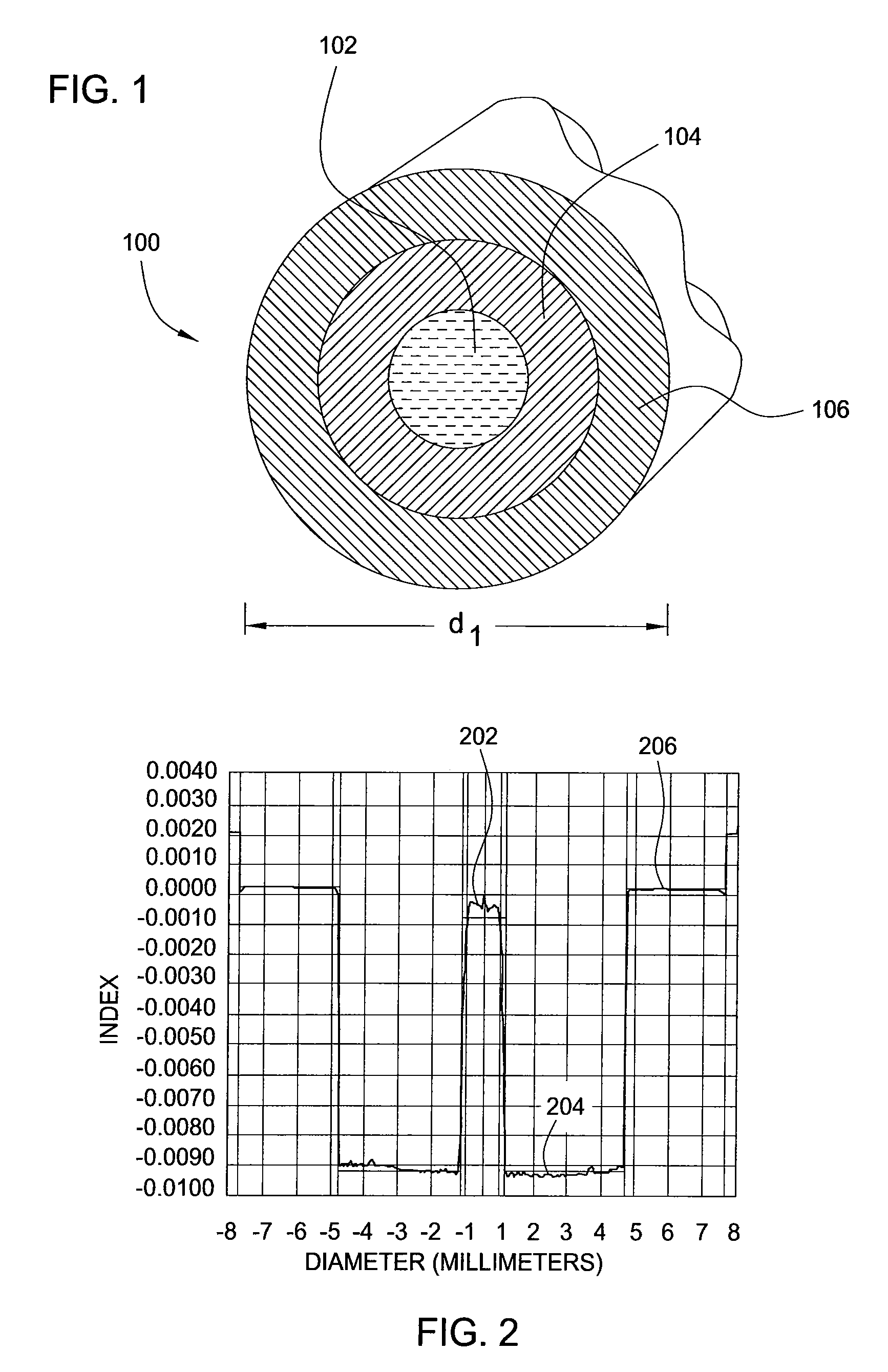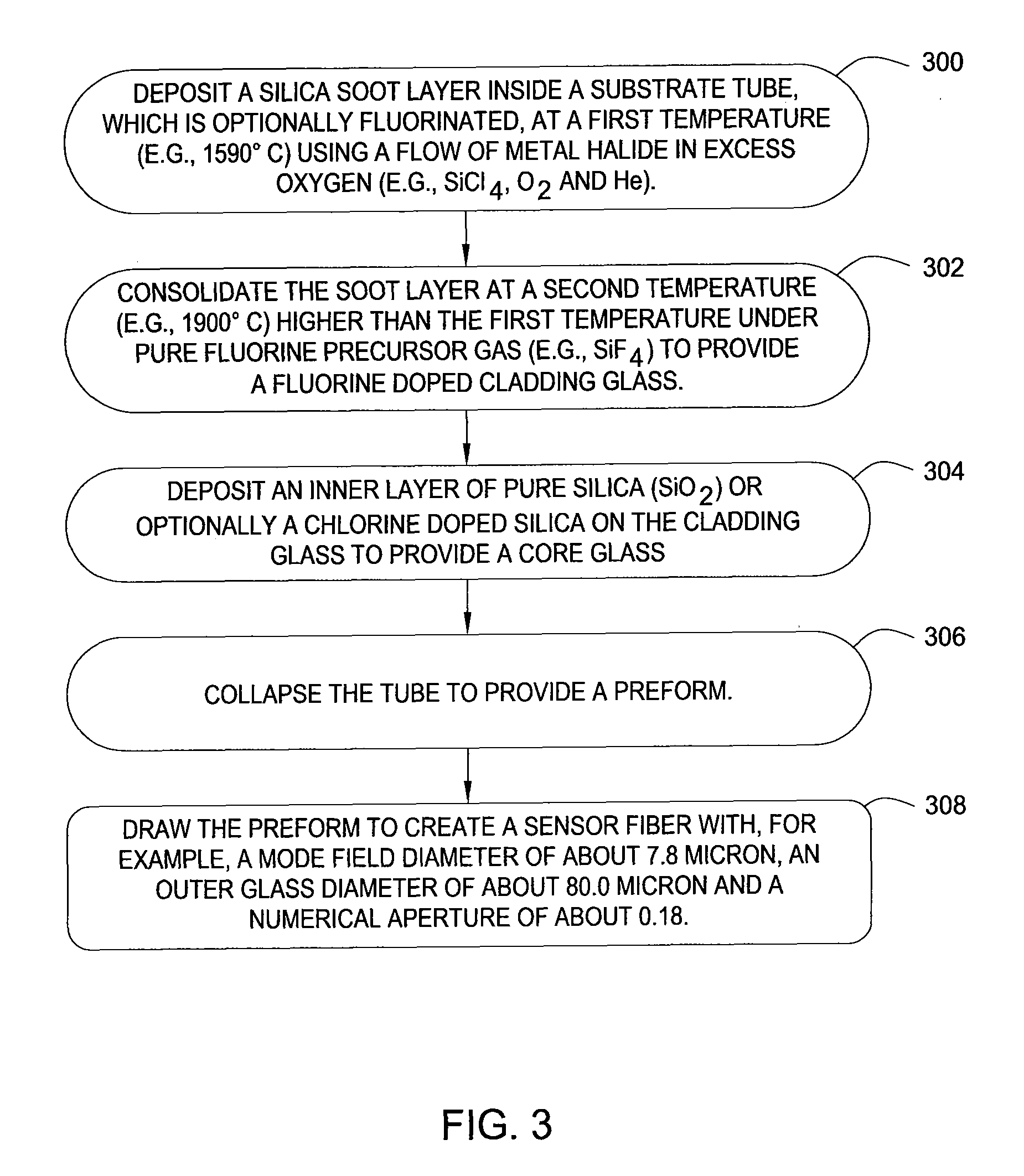Single mode optical fiber with improved bend performance
a single-mode optical fiber and bend performance technology, applied in the field of optical fibers, can solve the problems of high attenuation or even total darkening, affecting the optical and mechanical properties of the fiber, and affecting the performance of the fiber
- Summary
- Abstract
- Description
- Claims
- Application Information
AI Technical Summary
Problems solved by technology
Method used
Image
Examples
Embodiment Construction
[0016]Embodiments of the invention relate to optical fibers suitable for use in sensing applications exposed to radiation environments. The fibers include a core of pure silica or chlorine doped silica surrounded by a fluorinated silica cladding. These glasses for the core and cladding utilize dopants that resist radiation-induced attenuation. A two step process for forming the cladding can achieve necessary concentrations of the fluorine by performing a soot deposition process in a different environment from a consolidation process where the soot is sintered into a glass. Concentration of fluorine doped into the cladding layer enables obtaining a numerical aperture that confines a mono-mode of the fiber to resist bend-induced attenuation. Dimensions of the fiber further facilitate bending ability of the fiber.
[0017]FIG. 1 shows a cross section of an optical fiber 100 with a core 102 for guiding light propagating through the fiber 100, a cladding layer 104 surrounding the core 102, ...
PUM
| Property | Measurement | Unit |
|---|---|---|
| refractive index | aaaaa | aaaaa |
| diameter | aaaaa | aaaaa |
| diameter | aaaaa | aaaaa |
Abstract
Description
Claims
Application Information
 Login to View More
Login to View More - R&D
- Intellectual Property
- Life Sciences
- Materials
- Tech Scout
- Unparalleled Data Quality
- Higher Quality Content
- 60% Fewer Hallucinations
Browse by: Latest US Patents, China's latest patents, Technical Efficacy Thesaurus, Application Domain, Technology Topic, Popular Technical Reports.
© 2025 PatSnap. All rights reserved.Legal|Privacy policy|Modern Slavery Act Transparency Statement|Sitemap|About US| Contact US: help@patsnap.com



